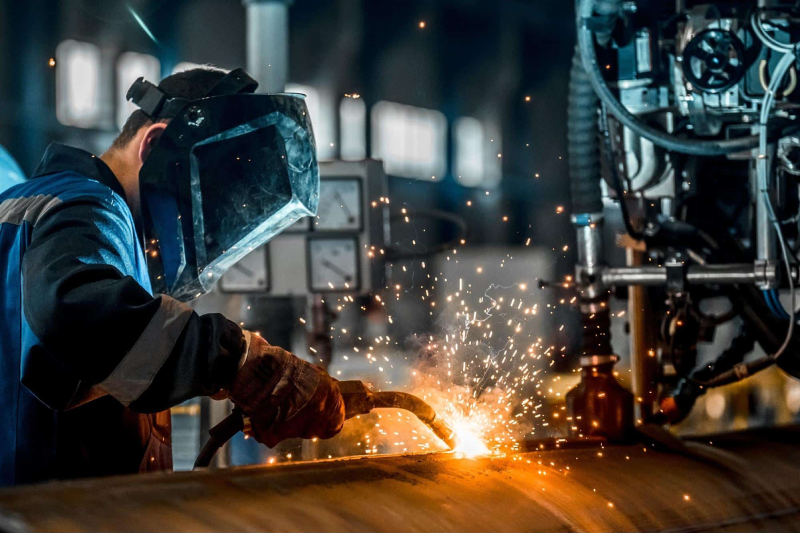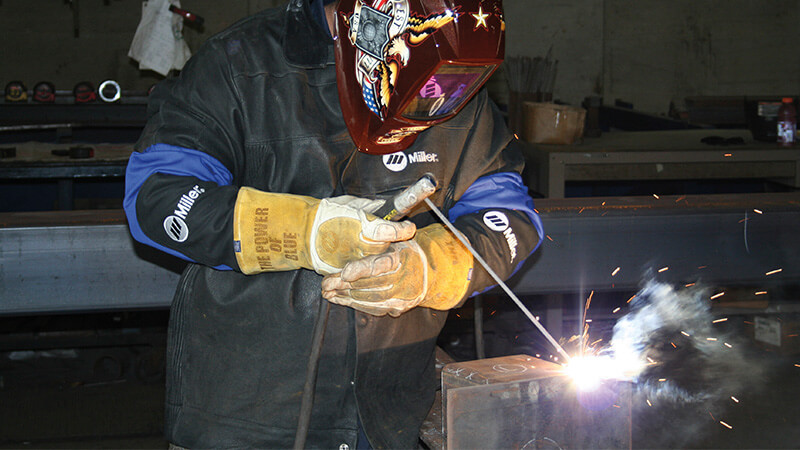Most frequent weld defects tackled by Belgrade Welding experts
Wiki Article
Typical Welding Repair Work Issues and Just How to Address Them Successfully
Welding repairs commonly run into a series of issues that can endanger the integrity of the final product. Typical issues include inadequate penetration, porosity, and imbalance, to name a few. Each problem offers one-of-a-kind obstacles that call for particular methods for resolution. Comprehending these concerns is necessary for welders aiming to improve their results and abilities. This conversation will certainly explore these usual welding fixing problems and reliable techniques to address them.Inadequate Penetration
Insufficient infiltration takes place when the weld steel stops working to fully fuse with the base product, resulting in weak joints and possible structural failures. This issue typically originates from not enough warmth input, inaccurate electrode angle, or incorrect welding speed. Welders may come across poor infiltration due to a mistake of the needed specifications for a specific product thickness or type. Furthermore, contamination on the base product's surface can impede effective bonding, exacerbating the trouble. To attend to insufficient infiltration, welders need to assure ideal setups on their equipment and keep a clean work surface area. Routine evaluation of welds is advised to recognize any deficiencies early, permitting for timely adjustments and the avoidance of compromised architectural stability in welded settings up.Porosity
Porosity is an usual issue in bonded joints that materializes as small gas bubbles entraped within the weld metal. This flaw can jeopardize the stability of the weld, causing minimized toughness and potential failure under anxiety. Montana Mobile Welding and Repair Fabrication. Porosity normally arises from contamination, moisture, or improper welding techniques, which enable gases to get away into the liquified weld swimming pool. To address porosity, welders ought to guarantee proper surface prep work, maintain a tidy workplace, and utilize suitable welding specifications. Furthermore, picking the ideal filler material and protecting gas can reduce gas entrapment. Routine examination and testing of welds can help determine porosity early, guaranteeing prompt restorative actions are taken, thus preserving the high quality and integrity of the bonded structureMisalignment
Imbalance in welding can develop from various variables, including incorrect arrangement and thermal expansion. Understanding the origin triggers is vital for reliable resolution. Numerous correction techniques are readily available to straighten elements and ensure architectural honesty.Reasons of Imbalance
Welding imbalance commonly comes from a variety of underlying problems that can jeopardize structural stability. One primary cause is incorrect fit-up of components prior to welding, which can lead to voids and irregular surfaces. Variations in thermal development throughout the welding procedure can likewise cause distortion, particularly if the products being signed up with have various coefficients of expansion. Additionally, inadequate fixturing and clamping may fall short to hold components securely in position, causing activity throughout welding. Poorly maintained equipment, consisting of welding devices and devices, might introduce disparities in the weld grain, more adding to misalignment. Finally, driver mistake, coming from insufficient training or experience, can also play a considerable duty in developing misaligned welds.Correction Methods Available
Resolving imbalance efficiently requires a combination of rehabilitative methods tailored to the specific concerns at hand. One common approach is the use of jigs or fixtures to hold parts in the appropriate placement during welding, making certain regular placement. In addition, pre-heating the products can assist decrease distortion and improve fit-up. For substantial misalignment, mechanical realignment techniques, such as making use of hydraulic jacks or clamps, can be employed to fix the placement prior to welding. Post-weld warmth therapy may also be necessary to soothe stress and anxieties brought on by misalignment. Cautious assessment and modification throughout the arrangement stage can avoid imbalance issues from becoming considerable troubles, advertising a smoother welding process and improving total architectural honesty.Distortion
Distortion is a common obstacle in welding that can emerge from numerous variables, including irregular cooling and heating. Recognizing the root causes of distortion is crucial for applying efficient prevention methods. Addressing this issue not just improves architectural integrity but additionally enhances the general top quality of the weld.Sources of Distortion
When subjected to the extreme warm of welding, products typically undertake modifications that can result in distortion. This phenomenon primarily emerges from thermal growth and tightening throughout the welding procedure. As the weld area warms up, the product increases; upon cooling, it acquires, which can create internal anxieties. Furthermore, irregular home heating across a workpiece can exacerbate these stresses, leading to bending or bending. The type of product also plays a considerable function; steels with differing thermal conductivity and coefficients of growth might respond in a different way, leading to uncertain distortions. Bad joint style and poor fixturing can contribute to imbalance throughout welding, enhancing the chance of distortion. Comprehending these causes is crucial for efficient welding repair work and avoidance strategies.Prevention Techniques
Efficient avoidance techniques for distortion throughout welding concentrate on managing warmth input and ensuring proper joint style. Maintaining a consistent warmth input aids to decrease thermal development and contraction, which can result in distortion. Utilizing strategies such as preheating the work surface can also reduce the temperature gradient, promoting consistent home heating. Additionally, choosing appropriate joint layouts, such as T-joints or lap joints, can boost stability and lower stress concentrations. Applying proper fixturing to secure the workpieces in place better aids in preserving placement during the welding procedure. click here to find out more Lastly, staggered welding sequences can disperse warmth more uniformly, stopping localized distortion. By applying these techniques, welders can substantially reduce the likelihood of distortion and boost the overall quality of their welds.Splitting
Breaking is a common problem run into in welding repair work, often arising from different elements such as improper air conditioning rates, product choice, or poor joint prep work. The occurrence of cracks can significantly endanger the honesty of the weld, leading to potential failings throughout procedure. To resolve this issue, welders have to first examine the origin causes, making sure that materials are suitable and appropriately selected for the certain application. Additionally, managing the air conditioning price throughout the welding procedure is important; rapid air conditioning can generate tension and lead to splitting. Appropriate joint style and prep work also add to reducing the threat. Executing these techniques can improve weld top quality and resilience, ultimately reducing the chance of breaking in ended up weldments.
Incomplete Blend
A considerable issue in welding repair work is incomplete fusion, which happens when the weld steel does not sufficiently bond with the base material or previous weld passes - Belgrade Fabrication. This flaw can bring about weak points in the joint, potentially endangering the integrity of the bonded structure. Aspects contributing to incomplete blend consist of not enough heat input, improper welding technique, and contamination of the surfaces being joined. To resolve this problem efficiently, welders should ensure correct pre-weld cleaning and surface area prep work, as well as change their welding criteria to attain sufficient penetration and blend. Normal examination throughout the welding procedure can additionally assist identify insufficient fusion early, permitting timely corrective procedures to improve the total quality of the weldOverheating
While welding repair services can boost architectural stability, overheating offers a substantial difficulty that can bring about product deterioration. Too much heat during welding can change the mechanical homes of steels, leading to reduced toughness, enhanced brittleness, and warping. This phenomenon is specifically essential in high-stress applications where architectural reliability is critical. Determining getting too hot can include aesthetic evaluations for staining or distortion, as well as checking temperature throughout the welding procedure. To mitigate the risks related to getting too hot, welders should use ideal strategies, such as regulating warm input, changing traveling rate, and using appropriate filler materials. Additionally, applying pre- and post-weld warmth treatments can aid restore product properties and improve the general quality of the repair service, making certain lasting performance and safety.Frequently Asked Questions
What Are the Common Signs of a Welding Problem?

Exactly How Can I Examine My Welds for High quality?
To test welds for high quality, one can make use of visual assessments, ultrasonic screening, and radiographic methods. Each technique guarantees architectural honesty, determines defects, and validates adherence to defined requirements, eventually boosting the reliability of Find Out More the bonded joints.What Security Safety Measures Should I Take While Welding?
When welding, one need to prioritize safety by putting on proper individual protective devices, ensuring proper air flow, securing flammable materials away, maintaining a tidy work area, and being conscious of environments to stop mishaps and injuries.Can I Fix a Weld Without Redesigning the Entire Joint?
Fixing a weld without redesigning the entire joint is possible, relying on the damage (Belgrade Fabrication). Techniques such as grinding, including filler material, or using a welding process can efficiently address particular imperfections while maintaining the surrounding frameworkWhat Devices Are Essential for Reliable Welding Repair Works?
Vital tools for efficient welding repairs consist of a More Help welding device, cord brush, grinder, protective equipment, clamps, and filler products. Each device plays an essential function in making sure high quality and safety during the repair process. Porosity generally occurs from contamination, wetness, or inappropriate welding strategies, which allow gases to run away right into the molten weld swimming pool. Badly maintained devices, consisting of welding devices and tools, may present incongruities in the weld bead, additional adding to misalignment. When subjected to the intense warmth of welding, products commonly undergo modifications that can lead to distortion. Fracturing is an usual issue experienced in welding fixings, usually resulting from different factors such as improper air conditioning prices, material option, or poor joint preparation. A substantial problem in welding repair services is incomplete fusion, which takes place when the weld steel does not sufficiently bond with the base material or previous weld passes.Report this wiki page